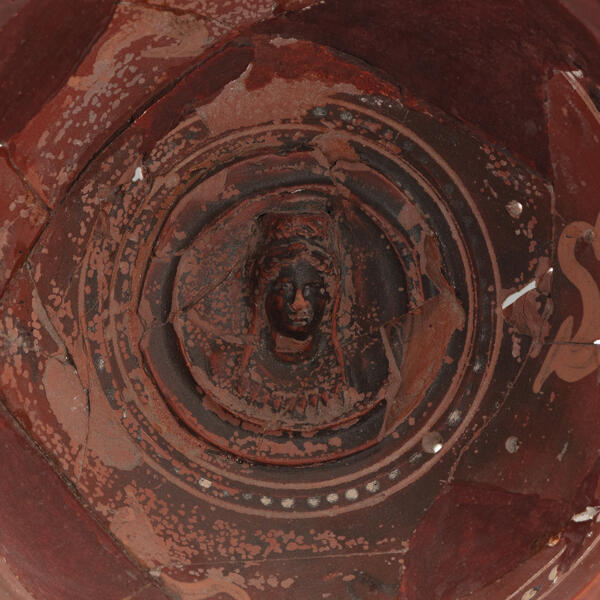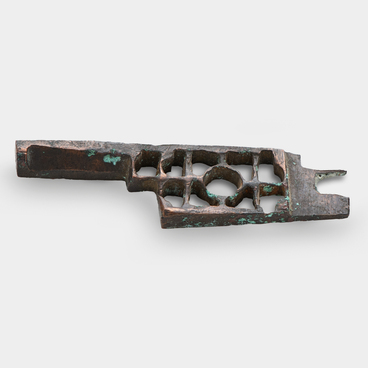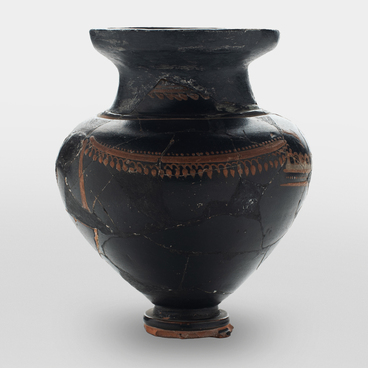The red-lacquered bowl on display at the Tanais Archaeological Museum-Reserve was discovered in 1957. Such bowls depicted mythological subjects, for example, those related to the legends of the Northern Black Sea Region, as well as hunting and war scenes, genre scenes, and more. The famous historian and archaeologist Dmitry Borisovich Shelov suggested that the bowls were produced in Asia Minor, specifically in Pergamon. The close interaction between the cultures of these two regions also had a significant impact on the polytheistic religious beliefs of both the local tribes and the people living in ancient cities. Several of the main deities in both cultures had similar functions.
The bowl has a dome-shaped design, with its edge beveled inward. The entire inner surface of the bowl is covered with decorative patterns. The bottom of the bowl stands on a low circular tray highlighted by a relief groove from the inside. Surrounded by concentric relief circles, there is a medallion at the bottom with the image of a female head, likely wearing a calathus. Higher, on the wall of the vessel, there is a strip of white dotted pattern between two concentric white circles. Above that, there is a wide decorative frieze featuring three dolphin-like creatures. On top of that, another band with a white dotted pattern completes the frieze. The medallion at the bottom of the bowl, with the image of the female head, may have symbolized a deity or a goddess. Opening the medallion may have been associated with the end of a ritual or a significant moment in a ceremonial dinner.
It is believed that such bowls were ceremonial
vessels and were used for drinking wine mixed with water in a 1:3 ratio. A cup
of wine was served to an honored guest. As the guest drank the wine, they could
gradually appreciate the unveiled artistic design on the vessel’s walls. When
the bowl was empty, the guest would see an image of ancient deities or scenes
from Greek mythology. The image on the frieze, depicting three dolphin-like
creatures, also had symbolic significance. In ancient mythology, dolphins were
associated with Poseidon, the god of the sea. They symbolized protection and
good fortune. Perhaps the image of a dolphin served a religious purpose,
invoking divine protection and blessing.



